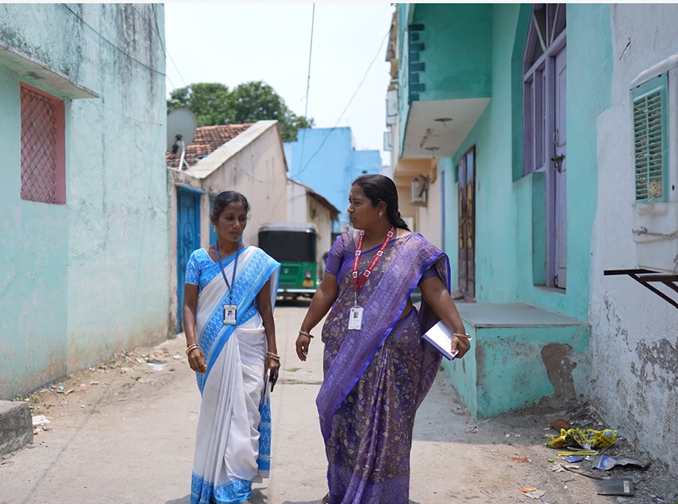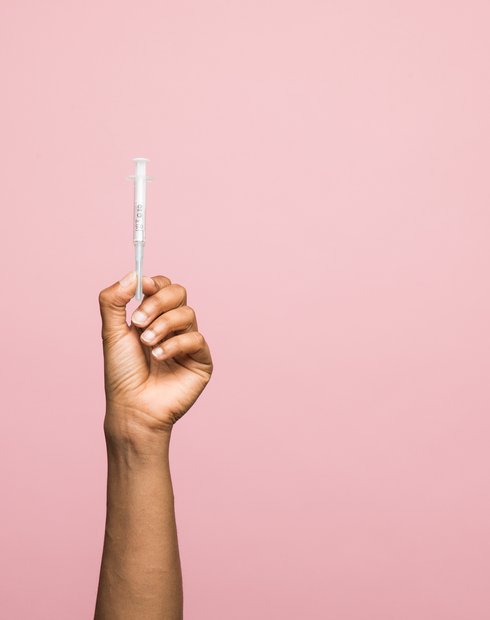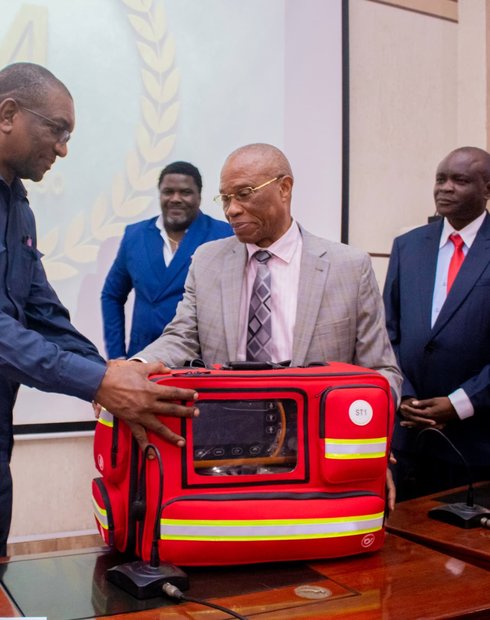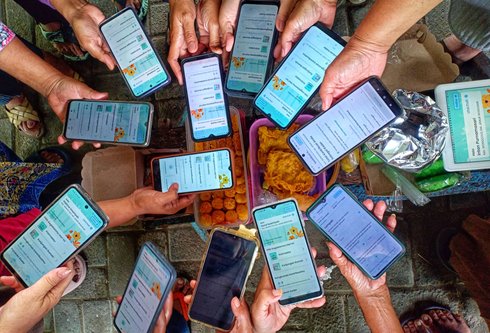Tuberculosis (TB) is a persistent public health challenge in India; the country accounts for 28 percent of the global TB burden. The risk of TB transmission poses a particular challenge in urban poor community environments, where overcrowding, poor sanitation, inadequate nutrition, and limited access to health care services elevate the risk of TB infection by nearly five-fold. Reaching people in these communities requires fit-for-purpose solutions that are responsive to community needs and preferences.
Some of the best resources to combat TB can be found within communities themselves. In India, there are multiple frontline health care worker (FLHCW) cadres who are trusted by the community and well-positioned to provide care and referrals. These include Community Health Officers, Auxiliary Nurse Midwives, Accredited Social Health Activists (ASHAs), informal providers, and private-sector pharmacists. In some areas in India, FLHCWs serve as the initial point of care for roughly two-thirds of individuals with TB symptoms.
Additionally, vulnerable youth aged 18–34 represent an important group who can contribute to TB prevention and care. They account for 27 percent of India’s population, but bear 38 percent of the TB burden. Youth have enormous potential and energy to engage their communities and influence their peers. In one survey, nearly one-third of youth respondents said they were interested in volunteering in TB prevention activities.
Both FLHCWs and youth, however, frequently lack knowledge about TB and the specific actions they can take to connect people to care and combat TB stigma. This can limit the potential of both groups to impact the TB epidemic.
In response, the “Take Charge Against TB” project was designed and implemented to achieve TB-free urban poor communities through the dual activation of FLHCWs and youth populations, who are well placed to raise TB awareness and link people with symptoms to care. This project, a public health initiative of Johnson & Johnson in collaboration with PATH and TB Alert India, and in strategic partnership with India’s National TB Elimination Programme, was implemented across the three cities of Delhi, Hyderabad, and Pune from January–June 2025.
The “Take Charge Against TB” goals were to strengthen health system capacity by upskilling FLHCWs to accelerate early diagnosis, and to improve health care seeking and linkage to care by mobilizing youth populations to support FLHCWs in these efforts.
Empowering frontline health care workers
To understand how to best build the capacity of FLHCWs, the “Take Charge Against TB” project needed to first understand the baseline knowledge, attitudes, and practices among the different FLHCW cadres. An in-person survey of 702 FLHCWs across Delhi, Hyderabad, and Pune revealed notable gaps: only 44 percent of respondents could recognize all primary TB symptoms, and 15 percent were not aware that TB was curable. Nearly 40 percent of FLHCWs across sites did not perceive themselves as being at risk for TB infection.
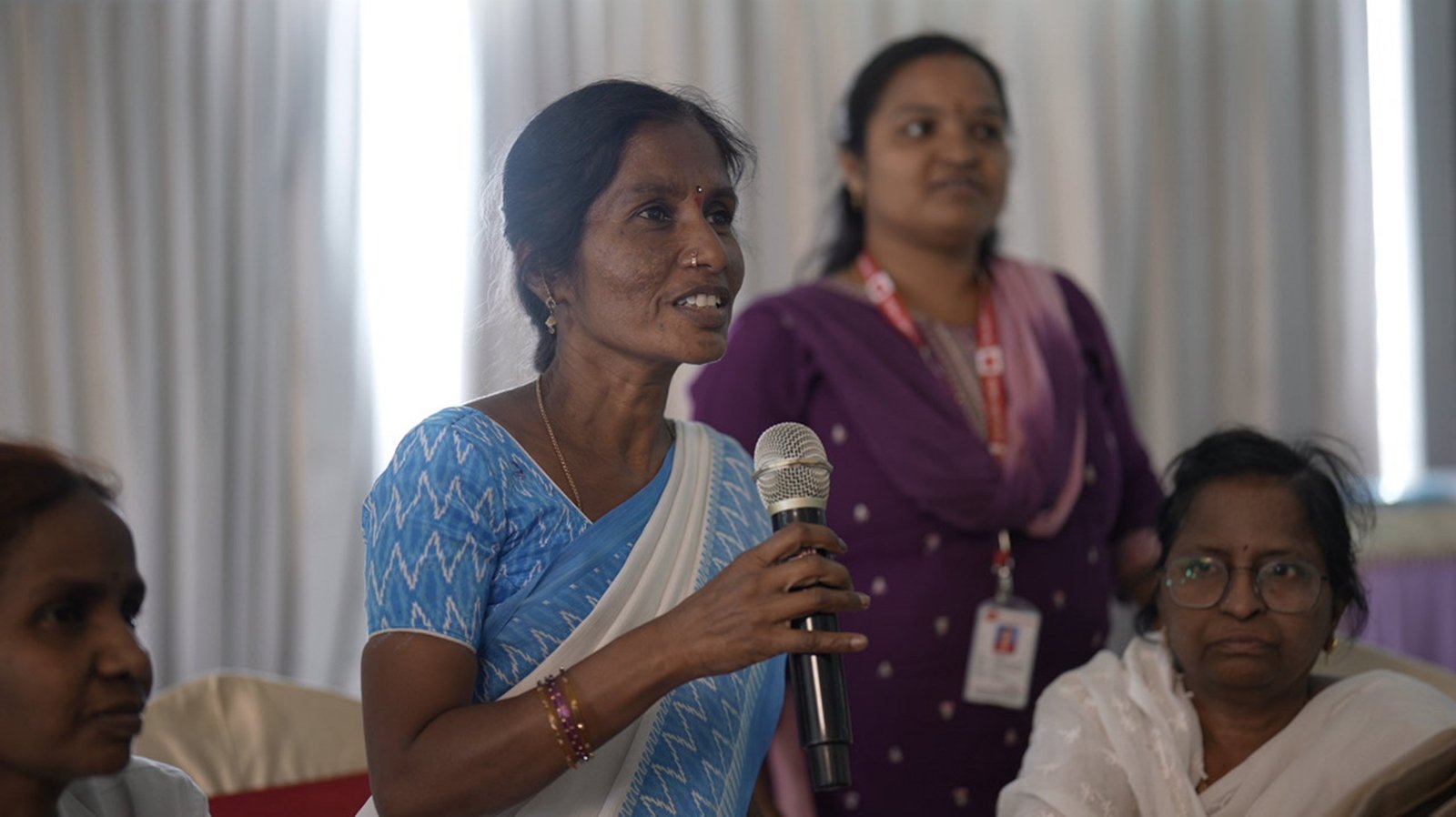
An Accredited Social Health Activist (ASHA) sharing her experience following 3Cs (competency, connection, and confidence) training in Hyderabad, India. Photo credit: PATH.
Based on this, the project team and FLHCWs worked together, using a human-centered design approach, to co-design and deliver a tailored training curriculum and six-month upskilling journey focused on the “3C’s” of TB: competency skills in screening and referral, connection skills for stigma eradication, and confidence skills for building community trust. After the training, learning was reinforced through weekly messaging via WhatsApp groups, mentorship, and recognition of achievements.
“The training opened my world about TB…it made me speak confidently to the community during screening beyond technical information, like stigma, myths, and effective communication.”— ASHA who participated in program
Big improvements soon followed. Post-intervention evaluations showed a mean 18 percent improvement in the level of FLHCW knowledge, attitudes, and practice. In addition, FLHCWs reached an average of 28,731 community members weekly with direct digital health promotion messages.
Overall, 961 FLHCWs (accounting for two-thirds of all FLHCWs across the three project sites) and 643 self-help group members were upskilled across more than 130 urban poor communities. Equipped with new skills, two thirds of FLHCWs who received the upskilling screened 15,753 community members for TB during the project period.
Harnessing the power of youth populations
As part of the dual activation, the “Take Charge Against TB” project also recognized and engaged youth as “champions of change.” The project rolled out an online campaign with concrete calls to action for youth to undertake TB self-screening and follow-on testing for themselves and their families.
In addition to this, youth were invited to sign up as health promotion volunteers, via either the custom TB Yuva Sathi platform or offline volunteer drives. After sign-up, volunteers underwent a blended training comprised of interactive in-person orientation with video-based learning on the 3Cs, received mentoring from corporate employees for sustained motivation, and carried out several types of activities: from sharing TB disease information on social media, to conducting school awareness sessions, to placing educational materials in community gathering spaces.
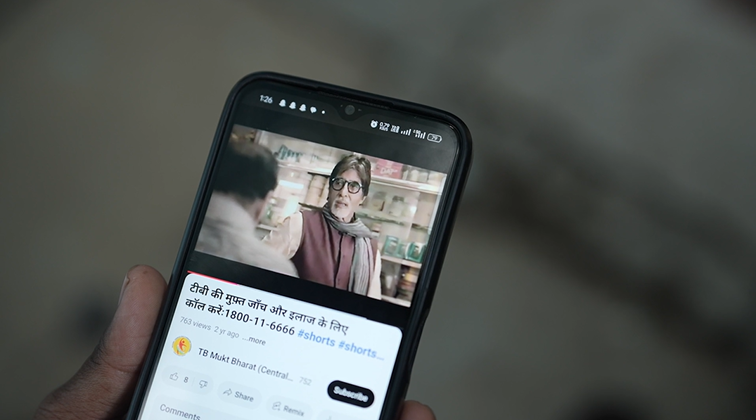
A youth volunteer sharing health promotion messages on TB through social media in Delhi, India. Photo credit: PATH.
The project’s messaging across Delhi, Hyderabad, and Pune, which specifically targeted lower-income areas, reached over 16 million people during a four-month period (a 160 percent achievement against the project target of 10 million). These efforts resulted in 1,800,000 symptom self-screenings on the project website, and 53,948 people opting to enroll for free testing in Ni-kshay (the Government of India’s digital platform for management of persons with TB).
“My father died due to TB. When my grandmother had symptoms, I didn’t want to lose her too. This program helped me to help her get diagnosed and treated.”— Youth volunteer
By the end of the project, 279 youth volunteers from the same geographies as the FLHCWs were onboarded. These volunteers conducted 1,032 health promotion activities, reaching 58,144 community members. An endline assessment of the project showed that volunteers were pleased with both the training and Johnson & Johnson corporate mentorship they received. Further, they were motivated by both a sense of social contribution as well as an interest in personal development and future career prospects.
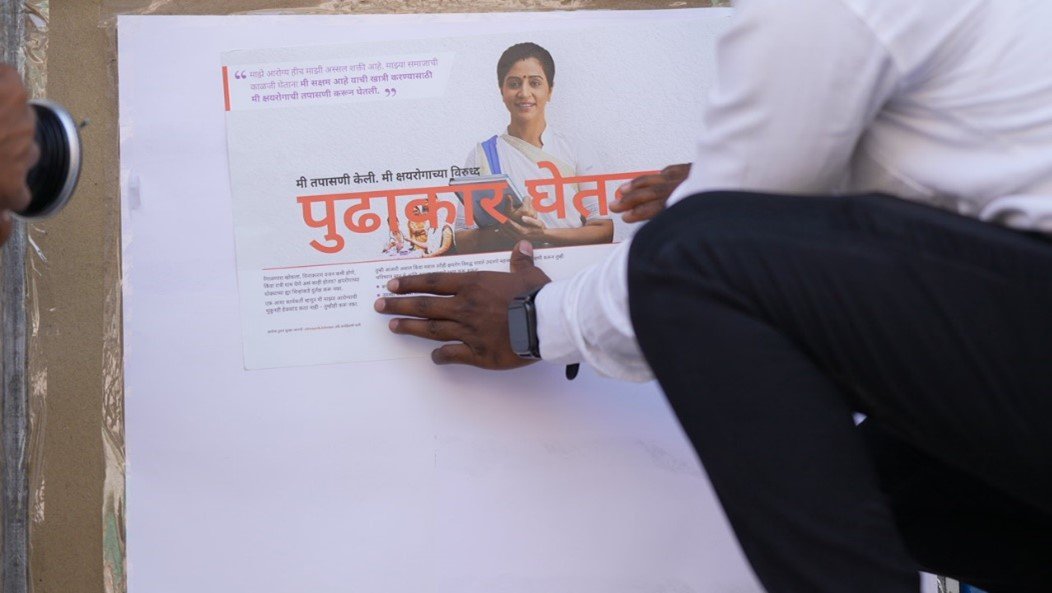
A youth volunteer putting a poster in a pharmacy to promote awareness on TB in Pune, India. Photo credit: PATH.
Continuing the momentum
With proof of concept in place, the “Take Charge Against TB” project now has the opportunity to both refine and scale up the model. Participant feedback at the end of the project revealed several ways in which the initiative could be further strengthened, including building out a WhatsApp-based digital engagement system for FLHCWs to continue developing their application of 3C skills, further tailoring the digital call to action for self-screening to local contexts, and creating a more formal recognition system for youth volunteers.
PATH will pursue a model of scaling up TB-free urban poor communities in additional geographies with additional corporate philanthropic support, to expand this dual activation model beyond communities in Delhi, Hyderabad, and Pune.
Finally, PATH is sharing learnings from the “Take Charge Against TB” project widely among stakeholders, including India’s National TB Elimination Programme and Central TB Division, to discuss lessons learned and the way forward to scale up and expand this promising initiative to reach even more people and communities across India.
